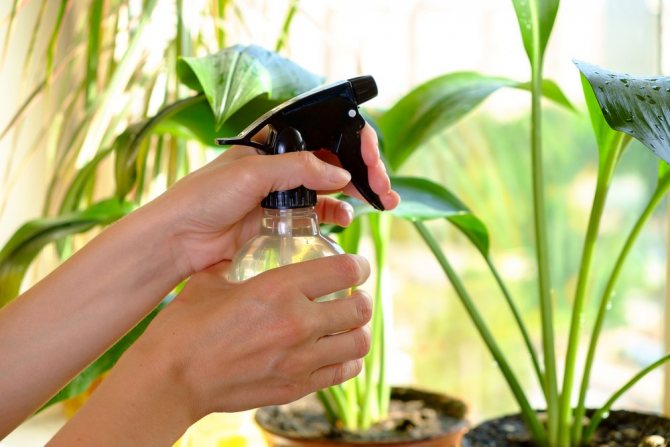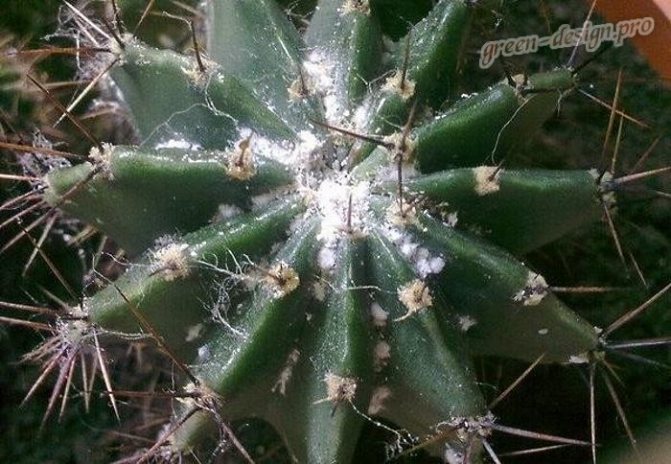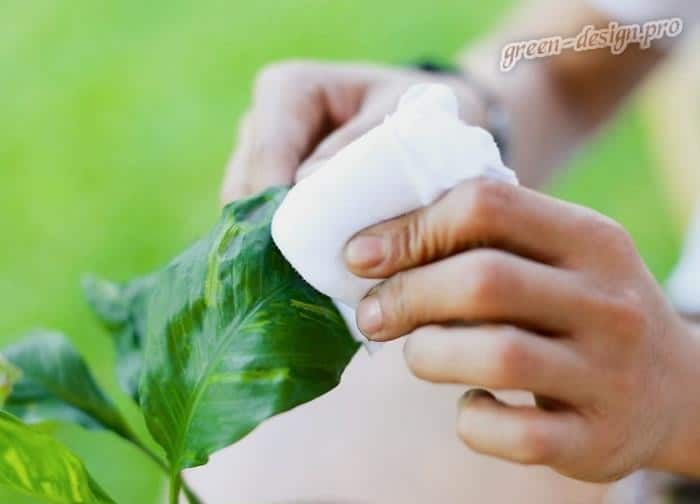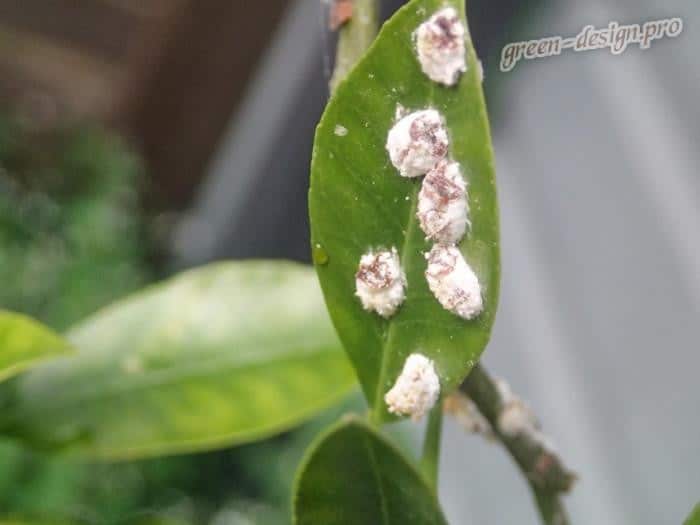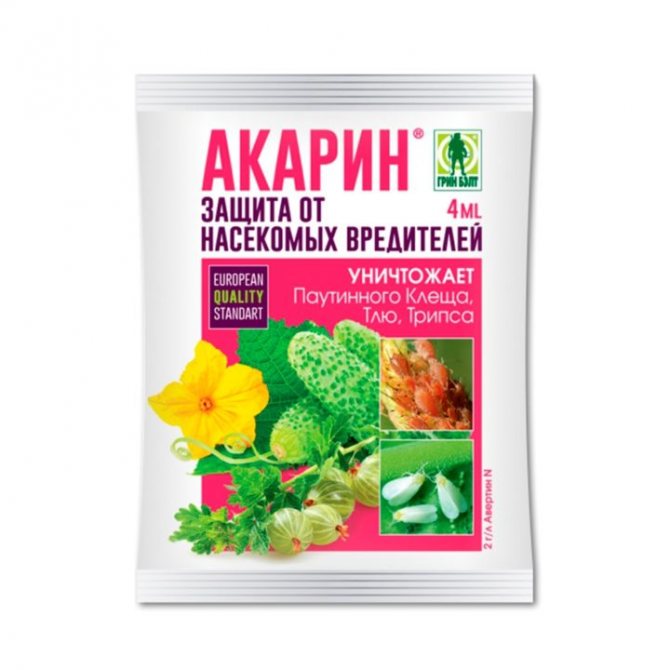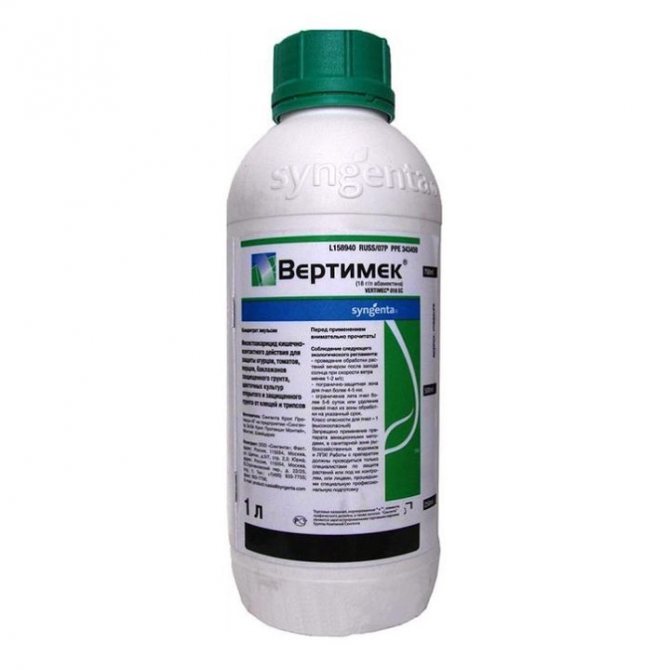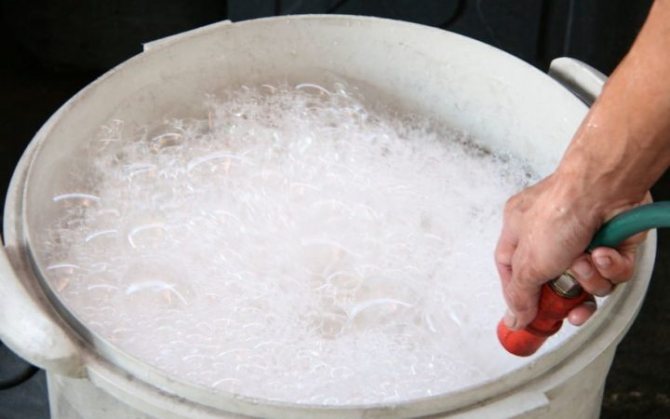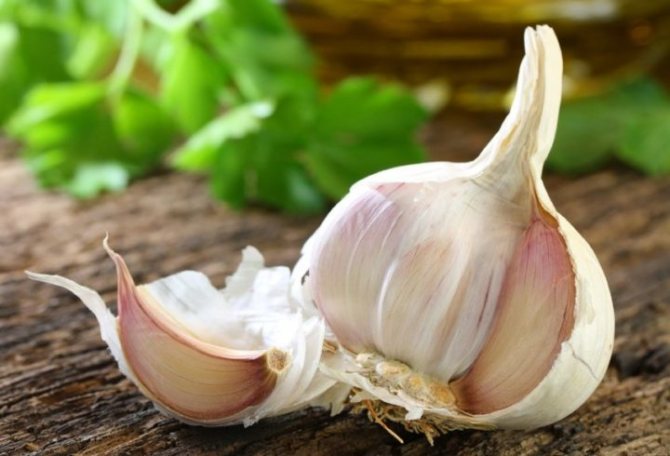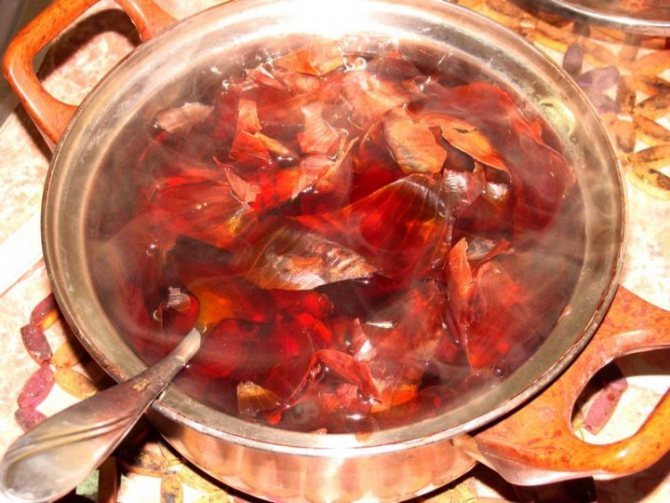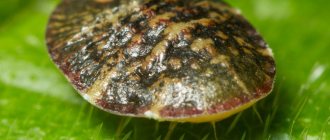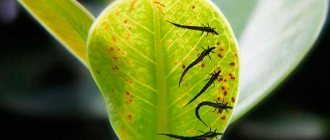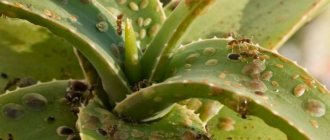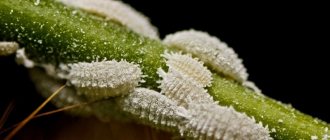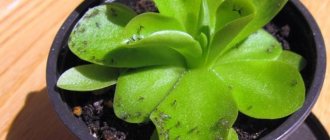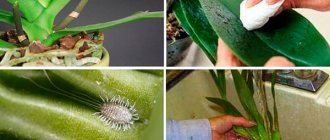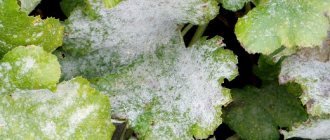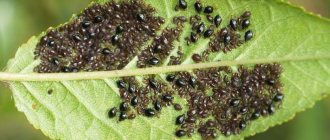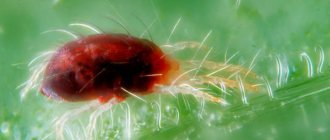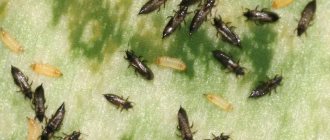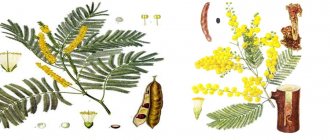Mealybug - how to deal with indoor plants
The mealybug, or hairy louse, is a sucking pest that cannot be overlooked on plants. It is a small oval parasite, up to 4 to 6 millimeters in size, depending on the species. Looks like a centipede with long antennae. Has a shaggy white body with bristles on the sides.
There are three types:
- seaside;
- bristly;
- grape.
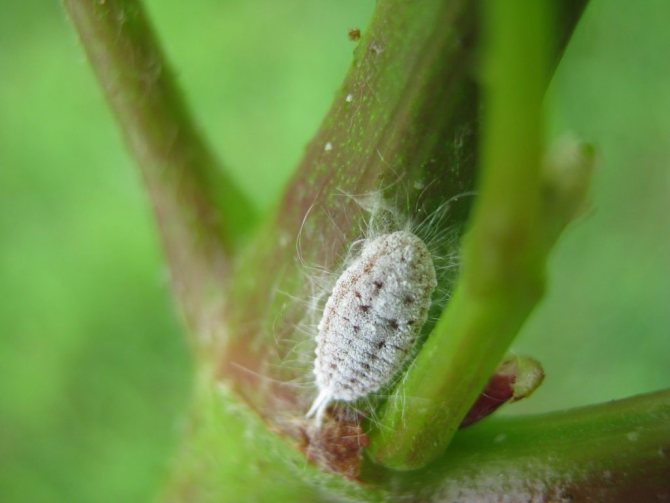
Mealybug
The plant is harmed only by the larvae of the mealybug, which look like a tick. They reach a size of 3 mm and are collected in colonies. They have well-developed legs, they can easily move from one plant to another. They damage plants by gnawing shoots, picking up under the bark or bulbs. As a result, the flowers stop growing and gradually die.
Important! It is necessary to fight parasites by performing a monthly preventive treatment of those plants that are at risk with a soap solution or specialized chemicals.
Insect description
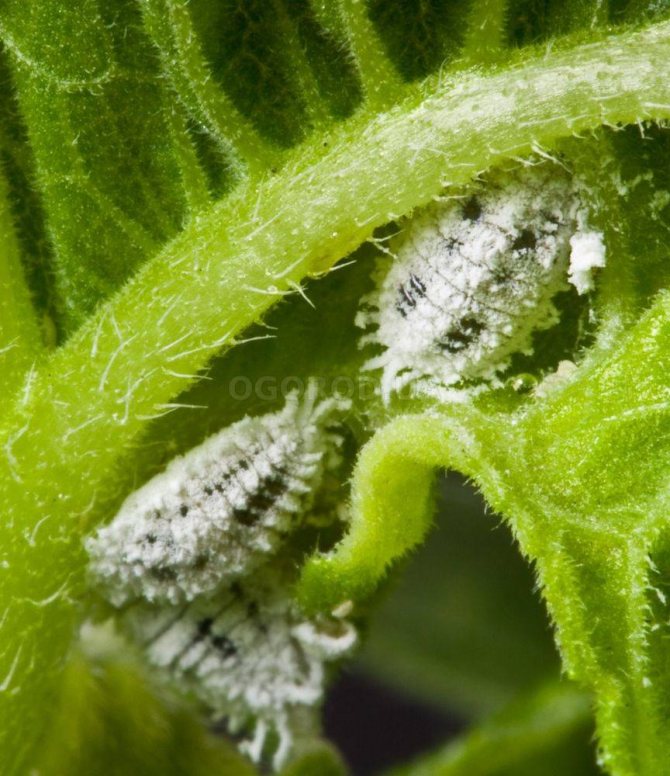

The appearance of an insect largely depends on the species to which it belongs. The size of the insect ranges from 0.5 to 12 millimeters. Outwardly, females and males are significantly different.
The male resembles a common mosquito. Its body is covered with a white waxy coating. There are long antennae at the end of the insect's abdomen. The male worm has wings, and in most cases they are located almost near the head. It is surprising that males of this genus do not feed, they have absolutely no apparatus for eating.
The female has an unusual oval-oblong shape, which is divided into three main parts - abdomen, chest and head. The front of the female is more convex than her abdomen. Females have three pairs of small limbs, but there are also species where females remain without movable limbs throughout their lives... The body of the female itself is also covered with a wax powder, which can be placed both evenly and chaotically. In addition, they have a mouth apparatus, which is a sucking organ.
Causes of the appearance of a pest on plants
Spider mite on indoor plants - how to deal
There is no exact answer to the question under what conditions, why and where does the parasite appear. However, most often it appears under the following circumstances:
- waterlogging or drying out of the soil of the plant;
- incorrectly selected temperature, humidity and illumination;
- lack of inspection of pots, untimely removal of dried parts and lack of water procedures;
- ignoring quarantine after buying new plants.
Attention! In addition, mealybugs result from large accumulations of dust and dirt in plant habitats. Therefore, they need comprehensive effective treatment.
What are the most common species?
Bristly
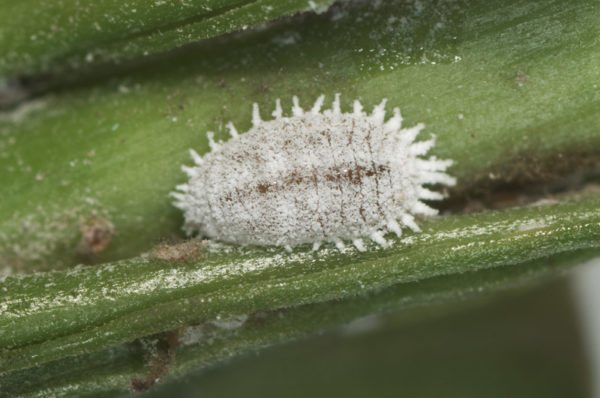

Outwardly, such a parasite has an oval body shape with slight elongation.... The color is slightly pinkish or orange with a characteristic bloom of white. The last pair of abdominal setae are longer than the others. A large accumulation of bristly worm can be observed on the back and in the axils of the leaves, on the branches of the plant. Refers to viviparous species.
Grape
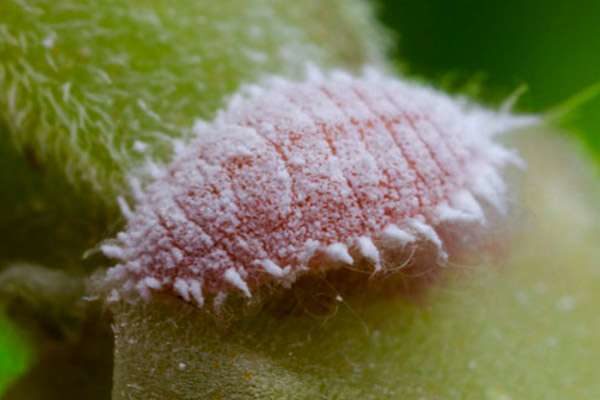

The female has an inherent wide-oval shape.This type of scale insect is most attracted by the subtropical climate. Pink or yellow refers to this species. The whole body is plaque. In grapebugs, males are extremely rare. The appeared larvae occupy the entire plant from shoots to leaves, or rather their main veins. The secretions of the worm lead to the appearance of sooty fungi in these places.
Seaside


The most harmful and at the same time widespread type. The color is gray-pink with a whitish bloom. The seaside worm has well-developed limbs., which contributes to their rapid movement through the plant. Unlike females of this species, males have wings and move in space throughout the summer.
Females lay offspring in hard-to-reach places, for example, in the bark of trees up to 350 - 400 eggs. A feature of the larvae is the absence of white bloom on the body. The larvae of the seaside worm turn into an adult within one month.
Citrus
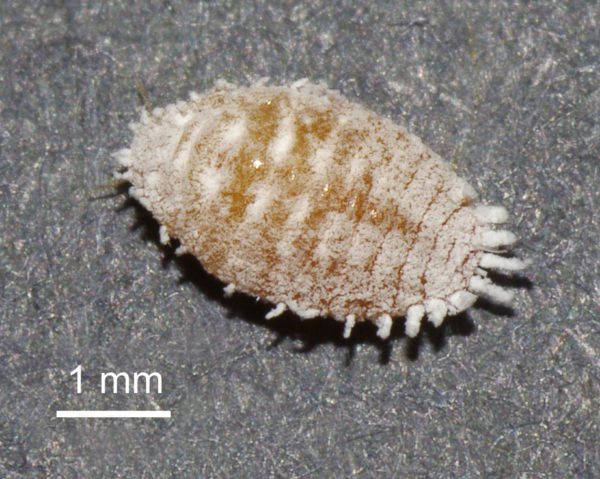

The color of this species is very diverse - from brown to slightly yellow. FROMCitrus bug stems emit honeydew, i.e. sweet secret... Males of this species, as well as coastal worms, are capable of flying. The color of males is often pink or yellow.
Infection symptoms
Aphids on indoor plants - how to fight at home
Symptoms that the culture is infected and it is necessary to start getting rid of the parasite usually looks like this:
- Fluff or cotton wool appears on the leaves. There are insect eggs, from which larvae hatch, which crawl over flowers and stems and destroy them.
- The culture begins to lag behind in growth, rapidly dry up and die.
- Leaves and buds fall off, flowering stops, leaves become sticky and yellow.
- The shoots are deformed, white fluffy lumps appear, which then turn into soot.
In addition, a large accumulation of white dots can be seen on the surface of the crops. This will be the start for removing insects from home flowers.
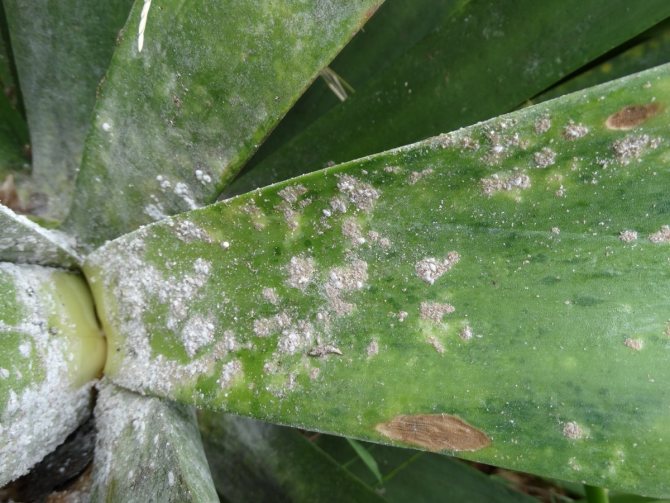

Symptoms
Typical signs of plant damage by a worm
When a plant is attacked by a furry louse, it will stop growing and show its flowers. Also, when it dries up, the foliage falls off. The most important sign of damage is the appearance of a white coating on the leaves, resembling flour and many large insects that can be removed and crushed with your fingers.
Attention! In rare cases, a sign of the disease is modified buds.
Harm from worms
Insects at all stages of life feed on plant sap, infect young shoots, leaves, buds, and much less on trunks and skeletal branches.
Where there are many worms, the bark of the trunk and branches cracks, "ulcers" form, the leaves become stained and turn yellow. In plants, decorativeness is lost, growth is delayed, flowering and fruiting cease, if the plant is not cured, it may die.
Worms are real gluttons, and they do not feel hungry and eat more than they need. All surplus is allocated in the form of honeydew, on which sooty mushrooms immediately settle. The surface of the plants becomes black, the shoots are covered with a sticky bloom, which leads to a reduced ability for photosynthesis and respiration of the plant.
Ants resort to honeydew, which begin to protect mealybugs from predatory insects, feed on secretions. Cases have been noticed when ants transferred eggs of a worm from one place to another.
What plants are most often affected and how dangerous
Scabbard on indoor plants - how to fight at home
Most often, the shaggy louse attacks azalea, amaryllis, asparagus, anthurium, grapes, gerbera, hibiscus, dracaena, cactus, kalanchoe, camellia, croton, monstera, oleander, palm, pachystachis, fuccia and philodendron.Sticky leaves appear on dracaena, buds are deformed on an orchid, and yellow leaves appear on violets.
The parasite is dangerous to plants in that it destroys their root system, leaves and twigs, leaving white traces of their vital activity on their surface. Also, insects poison the soil where the seedlings grow, and turn the habitat of the planted culture into hell.
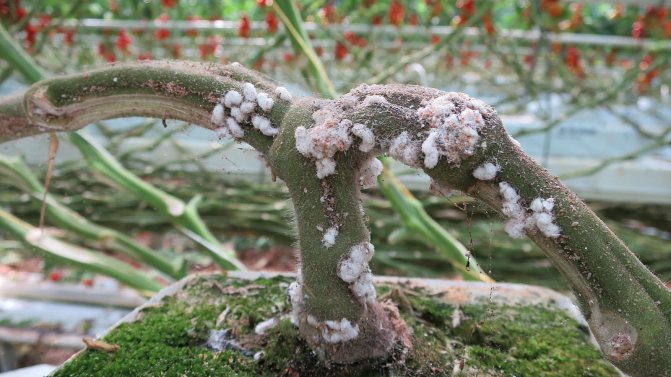

Plant species
Reproduction of pests
Mealworms are divided into several types. There are such females that can produce offspring without the participation of a male... And there are also unusual types of males that can change their gender.
How to get rid of midges in indoor flowers using folk remedies
In the same way, the number of eggs depends on the type of insect. The minimum number of eggs that females of one of the species can lay is 300, and the maximum is 2,000.
As for the development of these insects, they go through only 3 stages: the first stage - being in eggs; the second is reincarnation into a larva; and the third is the appearance of an adult. But there are exceptions, since some types of worm are viviparous.
How to start the fight against mealybug
At first glance, it is difficult to understand that a shrub is infected with an insect, since the culture is covered with a white bloom, similar to fungus or mold. Therefore, at the initial stage, it is important to decide what you still have to fight with. After that, you need to use one of the popular insect control methods. This can be done using proven chemicals or using folk methods. It is important to follow through and get rid of the pest completely. As a rule, it will take 10-12 days to completely defeat insects.
Attention! It is necessary to treat adjacent crops to avoid re-infection.
Signs of plant damage
At first glance, a mealybug infestation does not look like an insect infestation and is often mistaken for the appearance of fungus or mold. This is due to the fact that the growing colony of worms outwardly resembles a white cobweb, fluff, or drops of sticky cotton.
Females of the worm lay eggs on plants in white, fluffy, shapeless egg sacs, consisting of waxy spiderweb secretions. The bags are usually placed in secluded places of plants - in cracks in the bark, along the stems, in the axils of the leaves or under the leaves themselves.
Colonies also produce nectar, a sticky substance that attracts ants and encourages the growth of black mold. If you stir up a colony, it feels wet and sticky to the touch.
As the insects multiply, a loose powdery coating appears on the plant, consisting of white wax deposits and insects.
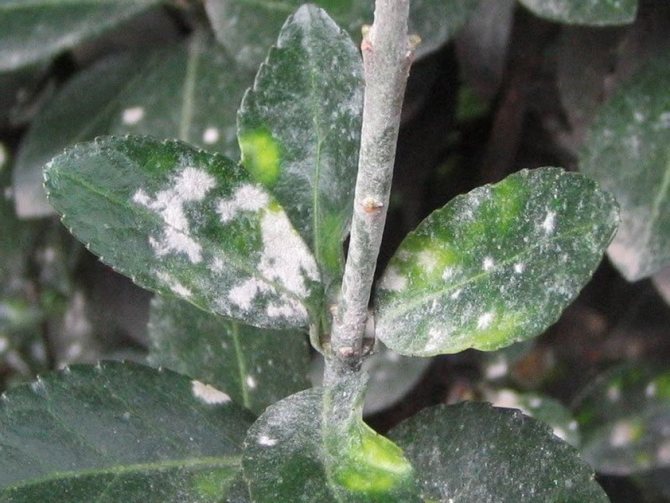

Affected plant may shed its leaves.
Adult females and larvae of the worm drink the juice of young shoots, leaves and buds of the plant, which significantly inhibits its development and growth.
Plant infection can also be indicated by lost elasticity, deformed, yellowed, or dead leaves, as well as drooping flowers. It becomes covered with spots, slows down its growth and takes on a depressed appearance. In addition, through the damage caused by the worm, the plant is affected by secondary infections.
A subspecies of the pest, the so-called citrus mealybug, attacks the roots. It grows more in pots of dry soil mixture, forming root "feeders" as well as white, rough masses around the roots. They can be found by freeing the plant from the pot.
Pests attack a wide variety of indoor plants. Cacti and succulents, including coleus, croton, fern, African violet, begonia, orchid, ficus, dracaena and pelargonium, are especially vulnerable to their presence.
How to get rid of mealybugs on indoor plants
Many people use chemicals and folk remedies as popular and most effective methods of struggle. Of the latter, they most often turn to soapy water, tinctures of medicinal herbs (for example, to calendula or horsetail), olive oil with water, garlic-water solution, tincture of orange and lemon peels.
No less effective is the method of treating the roots of a plant with hot water and then transplanting it into a new pot with fresh fortified soil. Also, simple washing of the plant under warm water, transplanting to a new place with a substrate and periodic prophylaxis with a lemon solution helps.
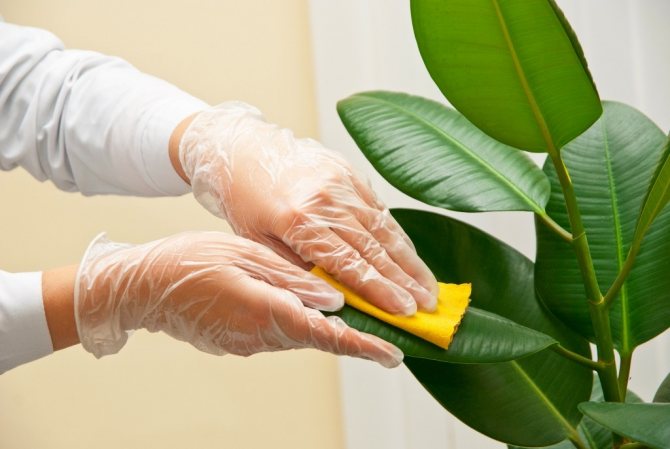

Soap solution
Folk remedies: soap-alcohol solution
An alcohol-based soap solution is one of the best remedies for quickly getting rid of a mealybug problem. All you need is to take any soap and stir it in warm water until it is completely dissolved. Then add 1 tablespoon of vodka or pure alcohol. With the help of the resulting preparation, spray it for 3 times with a 7-day interval.
Attention! People's experts guarantee that there will be no trace of the parasite, and the affected plant can again give beautiful flowers and grow.
Mealybug chemicals
There are many reliable home crop chemicals available. Among them, insecticides of such brands have proven themselves:
- Actars;
- Actellika;
- Fitoverma;
- Confidor Extra;
- Bi-58;
- Spark Gold;
- Apploud.
Some of the chemicals are toxic and can harm people and animals. Therefore, processing must be done in open rooms and rubber gloves, away from animals and children.
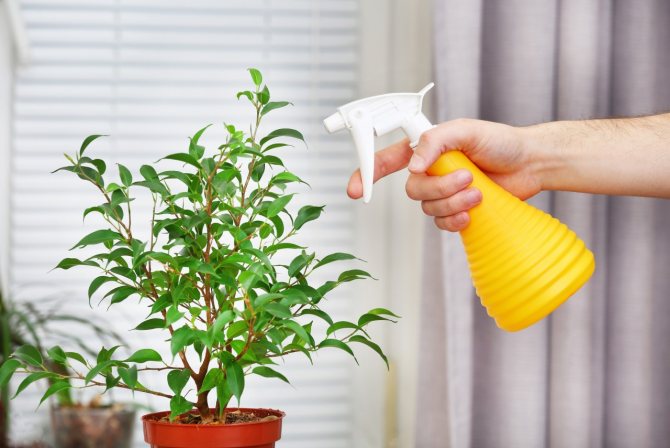

Chemical treatment
Control methods
Mild lesions are easy to deal with. With a soft brush or cotton swab dipped in soapy water, clean the plant from worms and the white cotton-like secretions they form, and then spray it three times with an interval of 7-10 days with a solution of green soap (10-15 g per 1 liter of water), tobacco infusion , infusion of garlic or decoction of cyclamen. A good effect is given by alcohol treatment or treatment with a pharmacy tincture of calendula.
In case of severe damage, in addition to manual destruction, spray at intervals of 7-14 days with one of the following products: Aktara, Biotlin, Calypso, Confidant, Confidor, Mospilan, Tanrek, Fitoverm... You may have to try several different drugs and choose the most effective one.
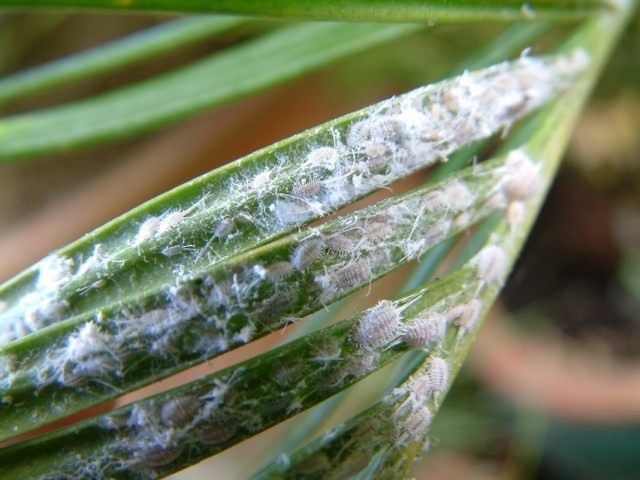

Mealybugs on the leaves of the plant.
Folk remedies
- Horsetail tincture. It is very good to water and spray diseased plants with horsetail tincture. Horsetail is sold in pharmacies and is used as a diuretic, as a blood purifier, etc. German name Schachtelhalmtee.
- Oil spraying agent. 1 liter of water is mixed with 2 tablespoons of olive oil and then the emulsion is applied to the plant (preferably by spraying).
- Alcoholic solution with soap. Treating the plant with a mixture of 15 grams of liquid soap, 10 ml of denatured alcohol (Brennspiritus) and 1 liter of warm water can also be successful.
- Garlic tincture. Take 4-5 cloves of garlic per 0.5 liters of water. The water must be brought to a boil, and the garlic must be finely chopped or squeezed. Then the garlic must be poured with boiling water, and insisted for at least four hours. The infusion is filtered and applied with a brush to the leaves undiluted.
Chemicals
The best time to use chemicals is when newly hatched juveniles leave the womb or egg sac. They are not yet covered with protective wax and are very vulnerable.
The complexity of the fight against mealybugs lies precisely in the fact that different generations of insects are on the plant at the same time, therefore a one-time application of an insecticide kills only young individuals, and after a while new ones hatch. In this regard, the use of drugs should be repeated several times every 7-14 days. The higher the stage of development of the larvae, the more difficult it is to deal with them.
Read also Pancake salad with chicken
Currently, a huge number of chemicals are sold in stores, including in the form of sprayers and sprays. After applying them to the plant, the protective chemical begins to be absorbed and enters the plant juices. Insects suck out such juice and poison themselves.
Preparations that, in addition to biologically active substances, also contain oil, have proven themselves very well in the fight against mealybugs. However, there are a number of disadvantages here. These medications should only be applied to affected areas and to areas that are considered potential insect hiding places.
When using sprays, before applying, you must carefully read what should be the minimum distance to the plant when applying, since the spray can damage the leaves very much.
On sale you can also find protective granules and so-called root sticks. Here it must be borne in mind that, in addition to protective substances, these products also contain fertilizer, therefore, before use, it is necessary to carefully study their composition, since the roots of many plant species are very sensitive to various kinds of salts, and can burn out very quickly. For such species, these drugs are not acceptable. Sometimes dilution of the drug in water can help in order to bring fertilizer and medicine to the roots in a lighter form.
When fighting mealybugs, it is necessary to repeat the procedures for exposure to chemicals in order to prevent the appearance of a new, more stable generation, therefore, you should carefully monitor the period of repeated exposure indicated on the package.
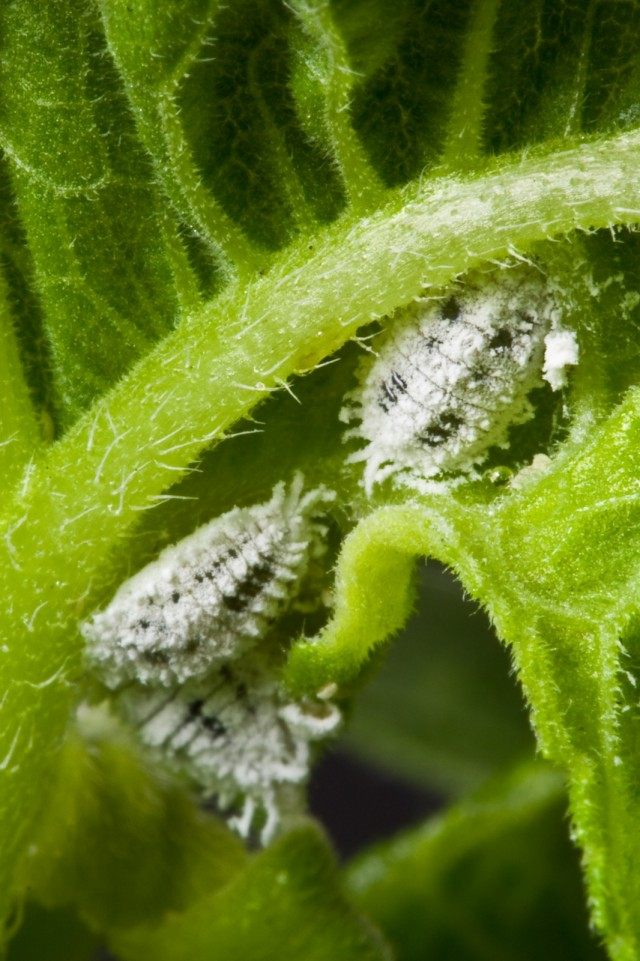

Mealybugs on the leaves of the plant.
Preventive actions
To avoid the appearance of hairy lice, it is necessary to regularly examine the leaves, stems and flowers of plants at risk for the appearance of white spots. If a diseased flower is found, treat it with preparations and wipe the rest of the indoor plants that are in close proximity to each other with soapy water.
Attention! When acquiring a new green friend, you should not immediately put it with other houseplants. It is necessary to keep it in quarantine for some time.
Once every two weeks, it is necessary to wipe large leaves with a damp cloth and moisten the flowers with light spraying, removing dust and dirt from them. Also, when dry parts appear, remove them in a timely manner.
In general, mealybug is an unpleasant phenomenon that affects many flowering house shrubs and perennial flowers. You can get rid of it with prevention, timely detection and chemicals.
Prophylaxis
- Newly purchased plants must be quarantined, periodically carefully inspect the leaves and branches.
- Inspection of plants and places around them, as males often fly and like to sit on windows.
- Periodically carry out a warm shower for plants, the water temperature is + 40 ... + 52 degrees, and also rinse windows and sills with hot water.
- Timely removal of dry and damaged plant parts.
- Single lesions with a mealybug are removed with tweezers or a hard brush. If the plant has a thick dense epidermis without a wax layer, then the brush can be moistened with kerosene, alcohol or soapy water. Wipe green areas with calendula tincture.
- Keep ants and anthills out of the area.
- Sticky traps.Male mealybugs fly into the light at night. Attach sticky plates near the lights.

